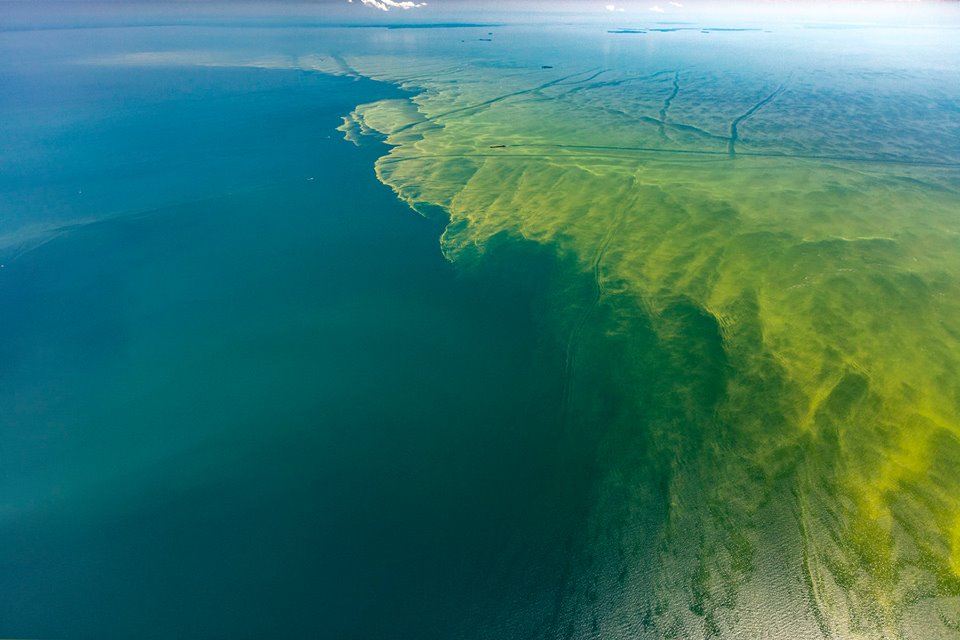Lake Erie Algae (ErieStat)
Tracking progress toward a healthier Lake Erie
Measuring what matters:
Shared goal for Lake Erie phosphorus
Approximately 11 million people rely on Lake Erie for drinking water. Additionally, the lake plays an essential role in supporting tourism, commercial and recreational fishing, agriculture, and manufacturing industries in surrounding states and provinces. However, recurrent harmful algal blooms and “dead zones” in Lake Erie have impaired drinking water, threatened public health, and hurt the regional economy.
What we do
Under the Great Lakes Water Quality Agreement, the U.S. and Canada, with the Lake Erie states and the province of Ontario, have agreed to work together to reduce the amount of phosphorus entering the western and central basins of Lake Erie by 40% from 2008 levels. Michigan, Ohio, and Ontario have further agreed to achieve the reductions for the western basin by the year 2025. Blue Accounting tracks progress toward these goals, supporting the Annex 4 (Nutrients Subcommittee) convened under the agreement.
What we measure
Blue Accounting reports relevant water quality data, including: the amounts of phosphorus contributed to Lake Erie by eight priority rivers in the spring; the annual amounts of phosphorus contributed to Lake Erie by ten priority rivers to the western and central basins of the lake; and work by the jurisdictions to implement activities under Domestic Action Plans for the reduction of phosphorus in Lake Erie. Some data are directly measured by governments and partners, while other data are modeled.

True color photo of the harmful algae bloom in western Lake Erie, collected on August 14, 2017 as part of the NOAA Great Lakes Environmental Research Laboratory’s HABs research program. Photo credit: Aerial Associates Photography, Inc. by Zachary Haslick
